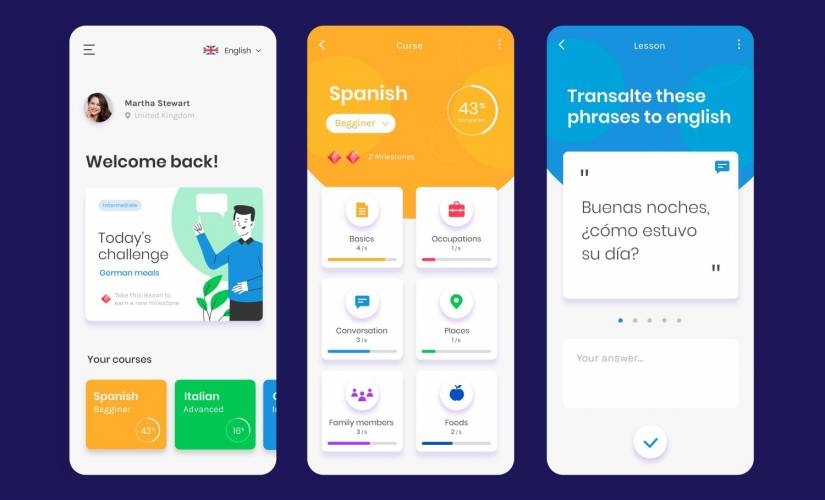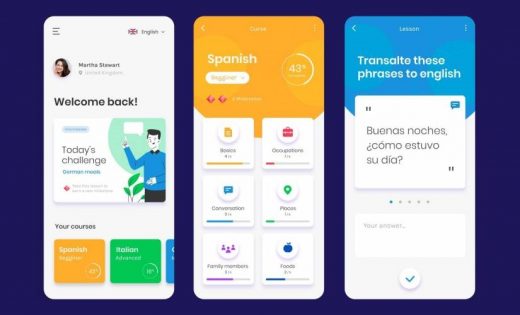How to improve the UX Design of your Mobile App?
How to improve the UX Design of your Mobile App?

According to a study by Statista, Smartphone users have around 10-30 apps installed on their Smartphones.
When a person installs an app, they will likely figure out if they wish to keep the app or uninstall it after the first use only. Therefore the app just has one chance of staying in the app list of the user.
In all the apps installed on the smartphones of users, they use mostly 5-8 apps daily, and others are there just there if the user may need them. For example, shopping apps, many users have shopping apps installed on their Smartphones, but they do not use the app on a daily basis. It is more like they use the app once a month.
But the reason they have kept the app is that the app is handy, and the app provides a better user experience than all the competitors.
86% of buyers are willing to pay more for a great customer experience. Nowadays, the experience is essential for the users, and when we talk about mobile apps, the UX is responsible for the experience that the users have.
How to Improve the UX Design of your Mobile App
The experience that your app provides plays a vital role in deciding whether the user will keep your app installed on their mobile and if they will use the app or not. Here are some tips on how you can improve the UX Design of your mobile app:
1. Increase speed:
According to a study by Google/SOASTA Research, if the app takes more than 5 seconds to load anything, it will increase your app’s bounce rate. For a mobile game, the long loading times are reasonable and normal as some games are pretty huge nowadays, but when we talk about a mobile app, people want the app to be as speedy as possible.
Moreover, the app can download offload data to increase the speed, and if the user installs the app instead of using the web version, they expect better results.
You can improve the speed by offloading the data, optimizing the images, reducing plugins, etc. Thus, you can speed up your mobile app.
2. Put the user’s use-case first:
When an app is developed, it is based on what the company or business developing the app is trying to solve. For example, a company that sells beauty products will develop an app that facilitates the products’ sales.
This is the first stage of developing an app, and if the app is developed based on what the company or the business wants to solve, the app will lack in the UX department.
The sole purpose of the app should be to help the user. In this case, the app should be developed based on providing a better shopping experience to the users and not increasing sales. If the app’s structure is based on providing a better experience to the user, the sales will automatically increase.
3. Effective Onboarding Process:
First impressions are very important. When a person downloads your app, the first thing that they are asked to do is to create their profile. This may be very important for you, but if the process is too long or too much input is asked from the user, they may get frustrated.
The onboarding process should be as quick and painless as possible. First, you should only ask for very important information. Next, you should allow them to sign up using Facebook, Google, etc. this way; they can sign up with just a few clicks. Instead of making the users type everything, you should provide dropdowns so that they can select with just a few touches.
4. Use small content:
A simple UX is one that is divided into different pages that have small content. AS the screen size of a smartphone is small, the content should also be small so as to make it easier for the user to explore everything.
Dedicate a different page to every different thing, and in this way, you can bifurcate the information easily—for example, the checkout process.
It is said that an ideal checkout process is one that consists of only three steps. More than three steps will frustrate the user; however, this is not entirely true.
You can bifurcate your checkout process in more than three steps. Just make sure that each step focuses only on one thing. This way, the user will not get frustrated. There will be more steps, but they will be short, and therefore it will save the user from complexities.
5. Using Gestures:
There are certain habits that a user has when they use their smartphones. If you want to deliver a superior experience with your mobile app, you should respect those habits, and you should use them in your mobile app.
For example, iPhone users can go back by simply swiping from the left side of the screen to the right side of the screen, and therefore, in your app, you should include the back button on the left top, but along with that, your app should also be able to use this gesture.
There are various other gestures like pinch to zoom, two fingers, 3D touch, etc. You should include it in your app to deliver a better user experience.
6. Test to improve your User Experience:
When we talk about testing the app, what comes to many people’s minds is to find the bugs of the app and see if there are any lags or problems in the app.
However, the main stage of testing should be to test if the app is able to deliver the required User Experience or not. The best way to do so is by performing remote user testing. The user’s taking part in the remote user testing will record their experience while using the app in their natural environment by using recording software. This way, you will get to know the experience that the users are having while using your app with their feedback.
If you are satisfied with the results, then this is the best thing, but if you are not satisfied by the user experience that your app delivers, you can try doing something new.
Conclusion:
There are various alternatives for each app out there. All the apps can copy the functions you provide, but what helps you stand out from the competition is the user experience that your app provides.
The user experience that your app provides will delight the users when they try your app and will make them revisit your app more frequently. To accomplish this goal, work as much as you can on the UX of your mobile app. Follow the tips mentioned above and various other practices to provide the best ever user experience via your mobile app.
The post How to improve the UX Design of your Mobile App? appeared first on ReadWrite.
(38)


